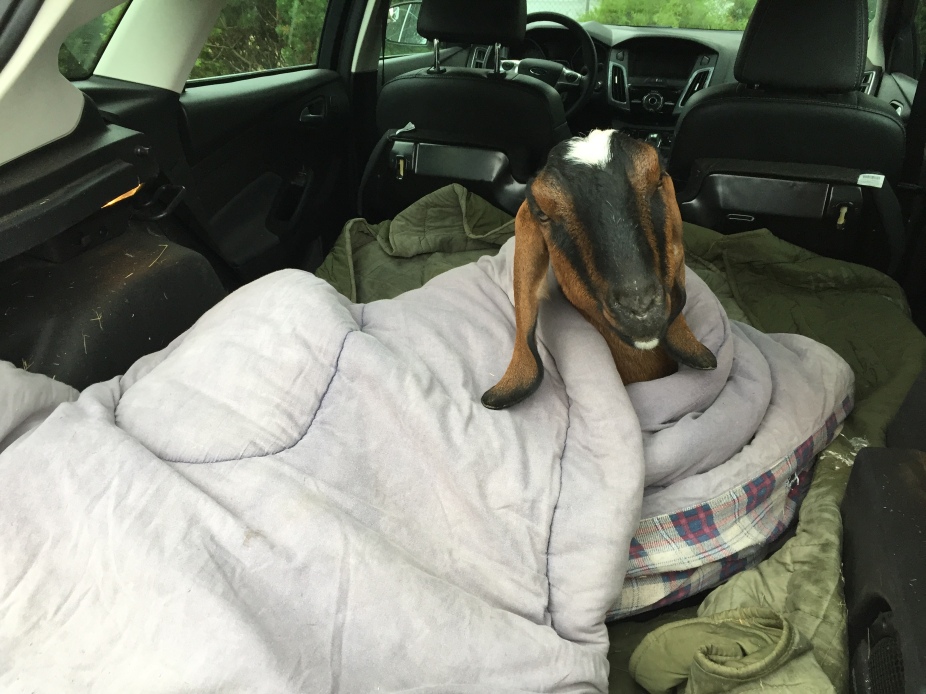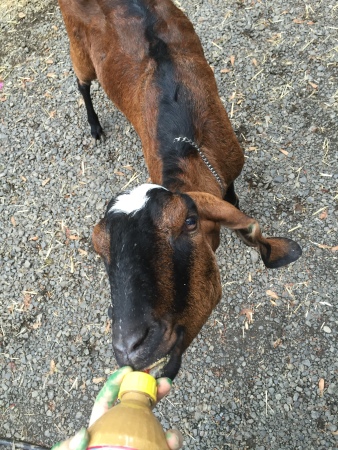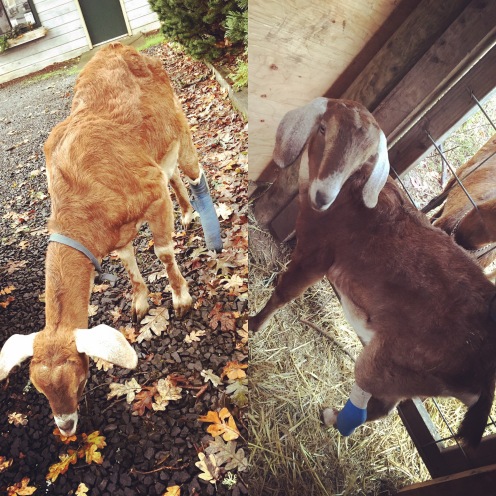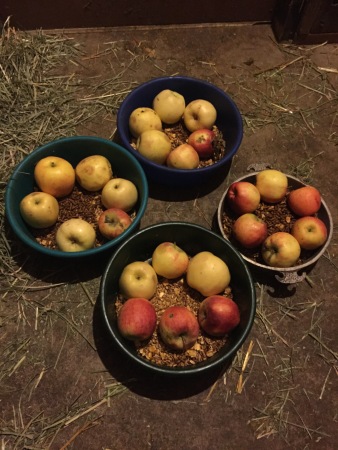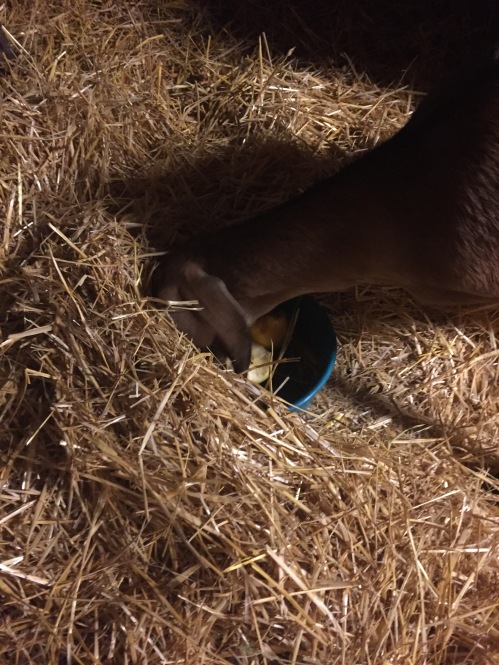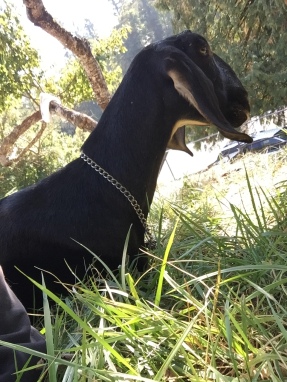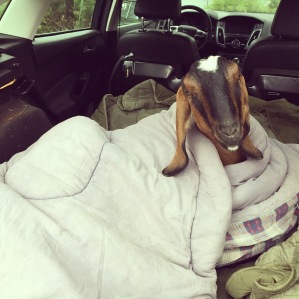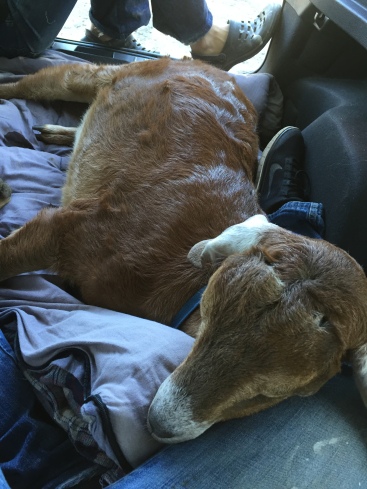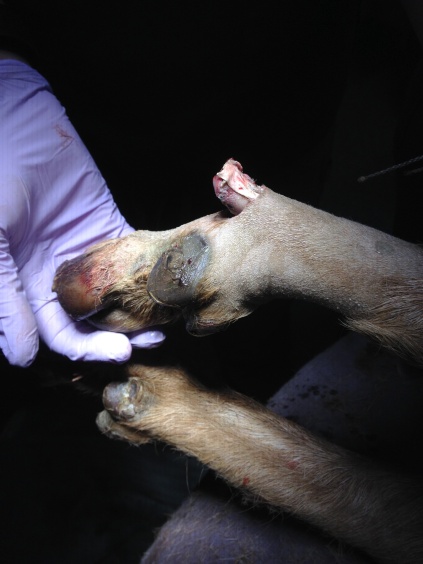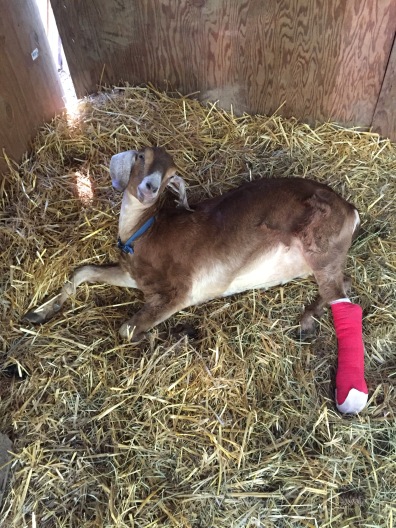Hey all! So this post is SUPER late. This summer has been a crazy situation of goats, building houses, new jobs, and all sorts of author busy times. I wrote this post months ago and proceeded to forget about it. I’ll refresh this post next Spring when it’s more relevant, but for now, it’s still great info!
– – – – – – – – – – – – – – – – – – – – – – – – – – – – –
As the excitement of new babies near, I thought it might be a good idea to re-hash some basic tips for pregnant mammas.
First, the most basic of basics:
DIET AND FEEDING
In the first month or so, when you’re not even sure if she’s conceived in the first place, it’s not a big deal what she eats. The regular good-quality hay you’re already feeding will be perfect.
However, as she starts moving into month two or three (and you’re sure she’s actually taken), you’re going to want to start providing a high-quality alfalfa. It doesn’t need to be her whole diet, but she’s going to need it. Alfalfa has the calcium and protein that she’s going to need to make those babies happen.
Also, I know it seems like a good idea to feed them lots of grain, to give them all sorts of energy and nutrients as they grow new life. But DON’T.
In the first three months of pregnancy it is a bad idea to give grain. Feeding grain during the period can to lead to something called Pregnancy Ketosis. I talk a little bit about it in this article here (along with hypocalcemia), but I’ll talk about it below too.
The simple(ish) explanation:
In the last 6 weeks to a month of pregnancy, when the babies are pulling a lot on on the doe for calcium, your doe is going to make a smart move and switch to focusing on eating alfalfa for it’s calcium and protein content.
Babies get 60% of their growth in the last two months, which is a lot of energy to expend. Often times, the babies are making the amount of volume she can eat much smaller, so she’s making the smart choice and eating what she needs.
Grain helps keep the correct calcium/phosphorus ratio that a goat needs for a healthy diet when being fed alfalfa. The problem is, if her body is used to the high-energy grain up until this point that the doe is suddenly not consuming as much as because she’s focused on the good stuff (alfalfa), it panics. There’s a sudden drop in this high-energy food, making it seem like the doe isn’t getting enough energy to continue to make babies. It starts drawing energy from her fat cells.
In a similar vein, in Hypocalcemic situations, which are slightly more complicated, she doesn’t eat enough grain or isn’t able to consume enough to keep up the proper calcium/phosphorus ratio. Phosphorus is needed to process calcium, so if she isn’t getting enough to process all the calcium she’s taking in, it’s like she isn’t eating it at all. Her body starts pulling calcium from her bones.
In either situation, the incomplete metabolic process results in an explosion of ketones, turning her blood extremely acidic. Pregnant does go down fast when this happens, and can kill just as quickly.
So this is the trick:
It’s good to give grain, but not until the last month/six weeks. That way, her body isn’t dependent on it and panics when she starts making more room for alfalfa versus grain (helping prevent Ketosis), and the new influx of energy and phosphorus helps process all the alfalfa she’ll be eating for her kids (helping prevent hypocalcemia).
Sidebar:
There is also a possibility of ketosis after a doe has kidded, if she’s a heavy milker. This is called Milk Fever (and is Hypocalcemia). It’s the same basic story: her milk production is demanding more calcium than she’s intaking, so it pulls from her reserves, and again with the ketones. The best way to prevent this problem is to make sure to increase her alfalfa and grain (not too fast, but a little bit over the next week) after she kids to keep up with her production. But I’ll write another article for post-pregnancy care.
Also –
Make sure your pregnant does aren’t being bullied away from food. Lugging around kids is tiring work, and other members of the herd might try to take advantage and up their place in the hierarchy. You can’t help that, but make sure the mammas get enough food. If they get big enough it might also be hard to get themselves to the feeders they normally have no problem getting to!
Another thing to keep in mind: mineral deficiencies. For example, in the area I’m at, there’s a selenium deficiency that’s prevalent. Most goat owners around here know it, and know to give selenium-rich minerals and Bo-Se (or Mu-Se) shots to pregnant does to make sure the kids don’t end up with white muscle disease. I haven’t had to deal with that in itself, but last year I did have a situation where I suspected a lack of selenium.
My local vet advises to give the shot before breeding, and then to give babies small doses after they’re born. But I’ve done quite a bit of research and talked to vets at conferences enough to think that giving these shots 6 weeks before the does kid is a better idea. That way, the does are getting any selenium they need and passing it to the babies right in utero. No pokes needed after birth.
Now, that’s just my somewhat-professionally-inspired-amateur advice, and I don’t know if it works the same for mineral deficiencies that might be in your area. But for selenium, that works.
STRESS AND PREGNANCY
Don’t stress them out. Avoid all transportation of them. I’ve never had it happen, but it is possible for goats to abort if they’re moved to a new home and get stressed out.
Probably not the best plan to introduce new goats either, where she might have to worry about fighting for her place in the herd. Last year, Blackberry took advantage of Sari’s giant pregnancy and toppled her off as top dog. Sari kidded the next day. Coincidence? Maybe. But it’s something to watch out for.
AS KIDDING TIME NEARS…
As kidding time nears, the does will start to waddle and be very hormonal, which is always enjoyable for me. Sari right now is nearly as wide as she is long (three kids? FOUR?), and Blackberry isn’t that much smaller.
Make sure you’re thinking about kidding spaces. Does like to kid in the place you least expect if they’re left to their own devices. It’s a simple matter to move everybody into the nice clean kidding area you’ve set up, but if you’re worried about where they might drop kids, you might consider locking them up a day or two in advance. In my particular set up I worry about the moms’ anxiety about being separated from the herd, and there aren’t too many places that are dangerous per se, so I don’t lock them up. Also, if you do catch them in time right before the birth, you can always move them into their nice kidding pen then!
Does also like to kid at absurd times like 3 in the morning. Be prepared for that. Last year I thankfully had angels for does, so they kidded at the lovely hours of 5pm and 1pm. I was even able to be present for the later. I’m not sure they’ll be as nice to me this time around… we’ll find out!
Make sure you have some basic things on hand you might need for the birth: towels, scissors, iodine (for dipping cords), something to clear baby noses if need be (what’s that sucking device called… they’re used on baby humans too).
And I think that’s about it for the basics of kidding prep! I’ve written here about kidding itself, and in the future I’m going to write about kids getting stuck situations, post-kidding good things to do… but for now, keep these things in mind and you shouldn’t have a problem. An ounce of prevention is really worth a pound of cure when it comes to pregnant mammas.
Give your kids a kiss for me,
DGD

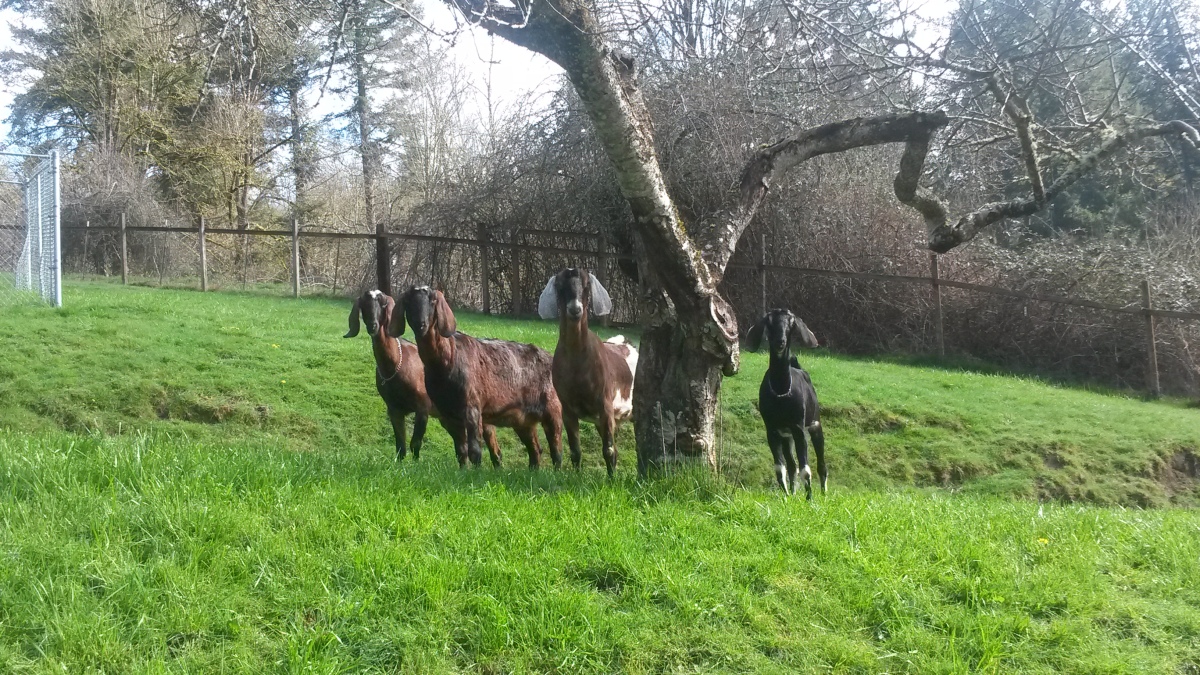
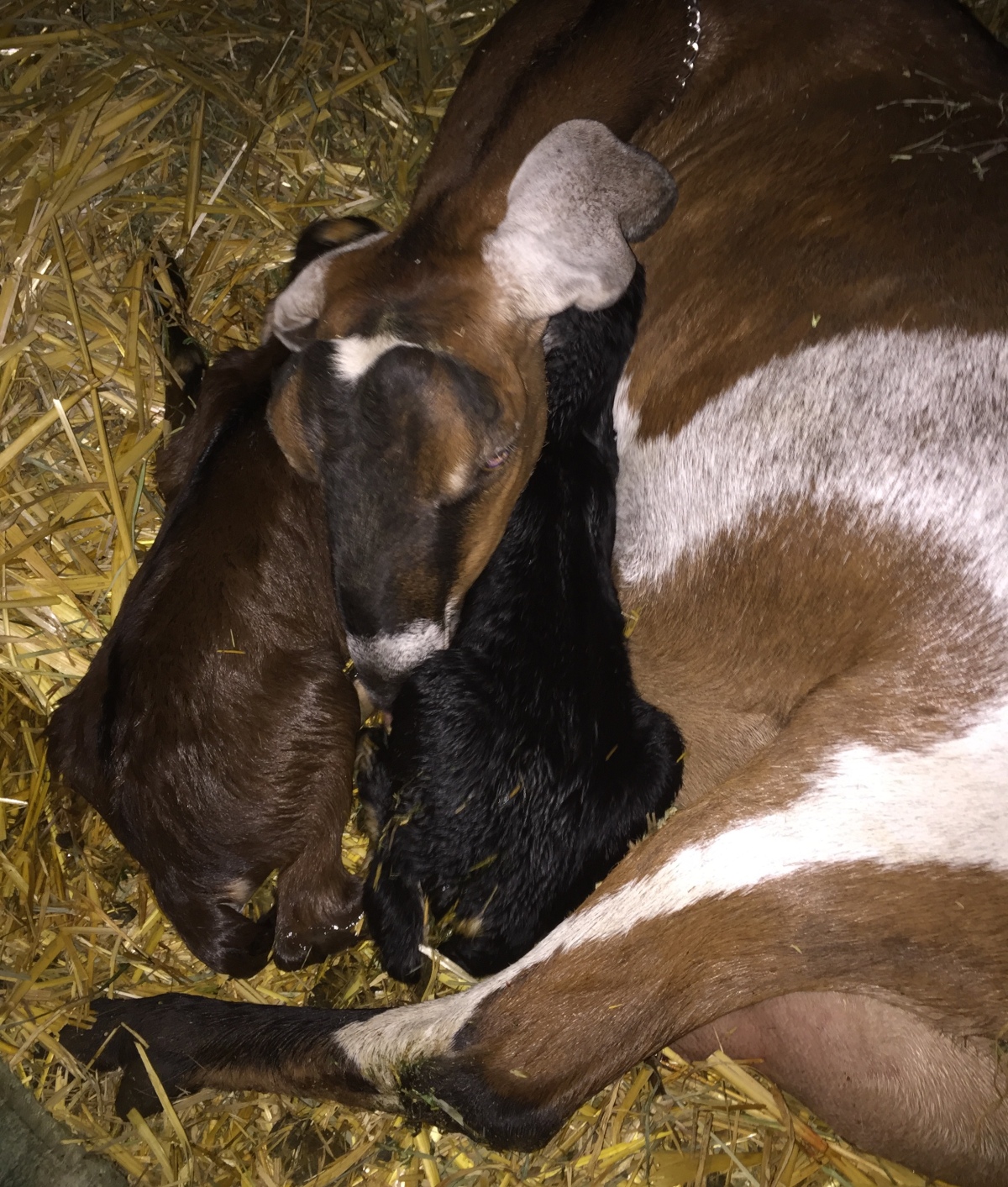





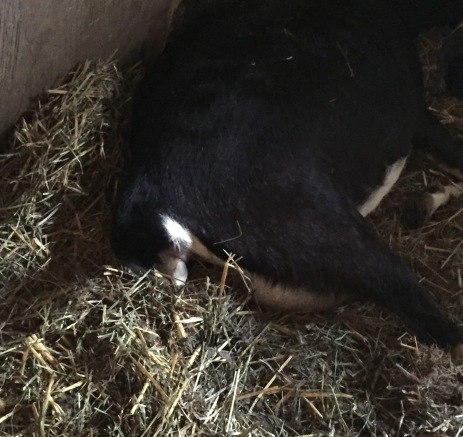

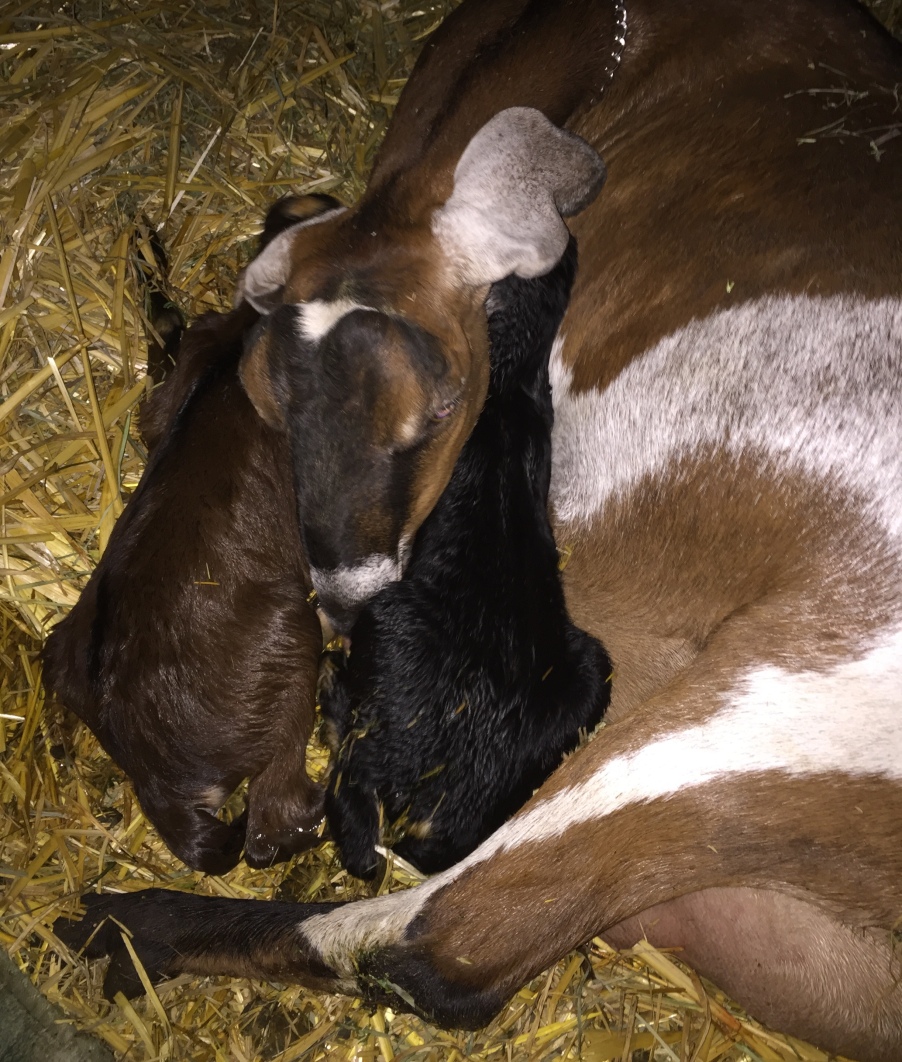
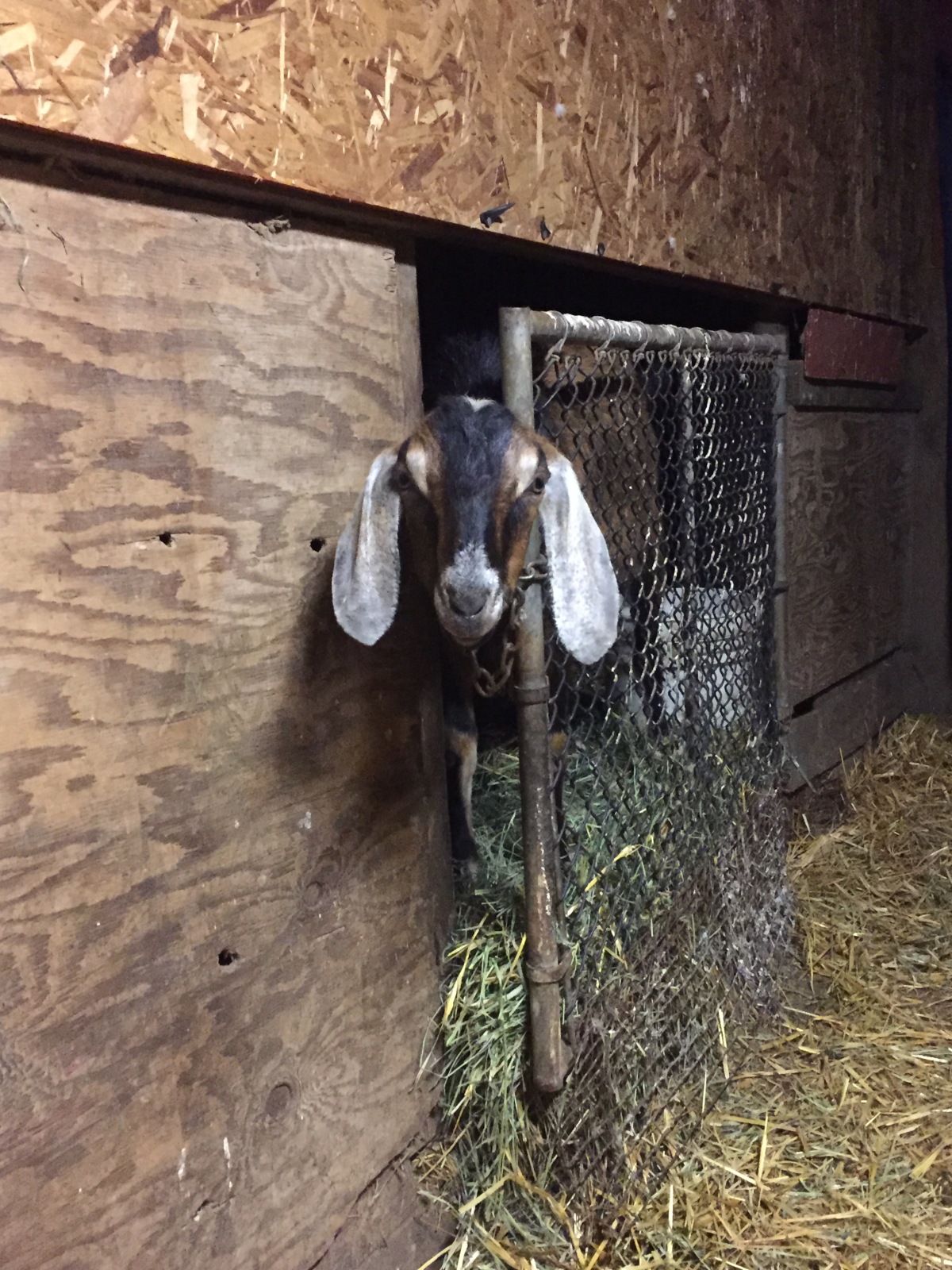
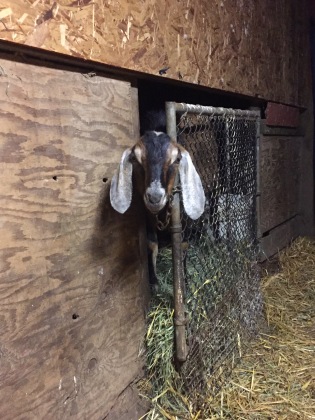 This evening, I was tickled to notice Aztec watching me move around, alert and attentive. So I wandered over and gave them both some attention.
This evening, I was tickled to notice Aztec watching me move around, alert and attentive. So I wandered over and gave them both some attention.